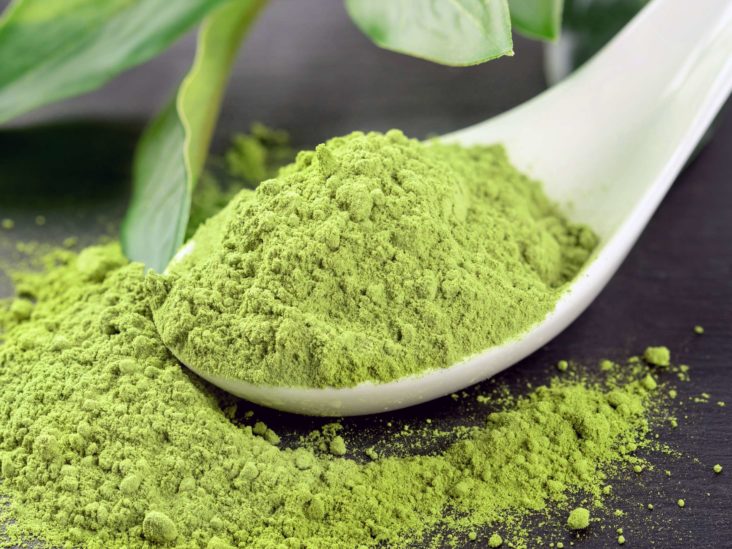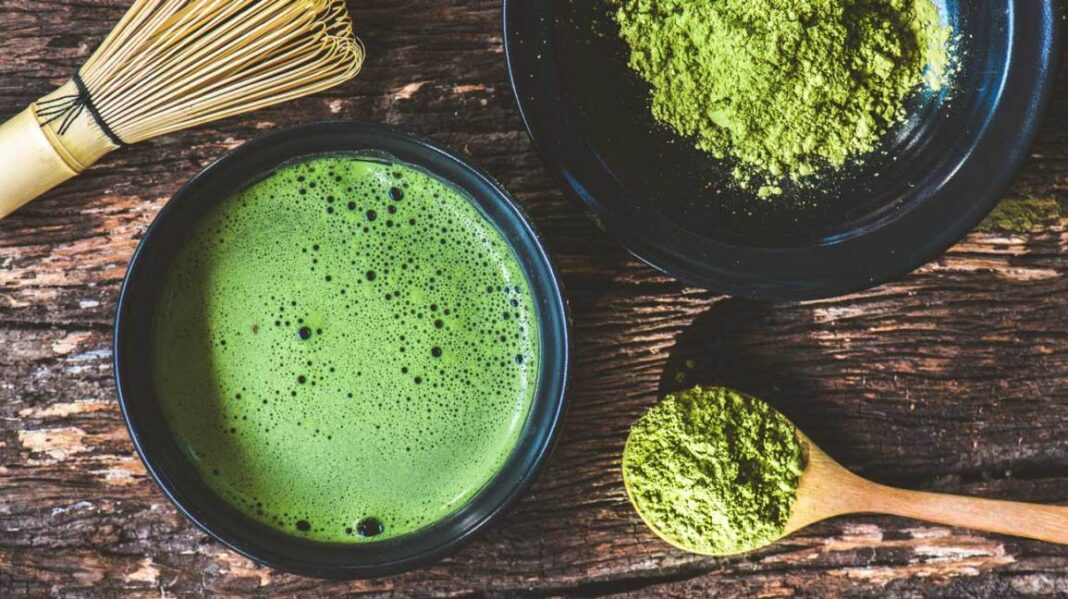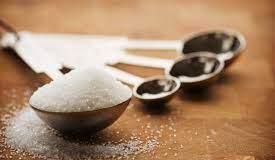Green tea is one type of tea from the Camellia sinensis plant. This is a similar plant utilized for different kinds of tea, like dark, white, and oolong tea.
For green tea, makers gather the tea leaves and right away hotness them. This keeps the leaves from oxidizing and becoming brown. Contingent upon the kind of tea, they might utilize various strategies -, for example, steaming, dish terminating, or sun drying – to handle the leaves.
They then, at that point, roll and dry the leaves to make their last structure. Soaking the tea leaves in steaming hot water makes the tea.
Green tea has a gritty, green, or vegetable-like taste. At the point when blended, the tea leaves behind a reasonable, yellowish green to light brown fluid. Green tea might have a somewhat astringent flavor in the mouth.
Preparing the tea for a really long time makes a more obscure brew that might be excessively unpleasant for certain individuals.
What is matcha?
Matcha is a sort of green tea. Producers utilize specific developing and handling procedures to transform the Camellia sinensis leaves into matcha.
They develop the tea plant in the shade toward the most recent couple of long stretches of reap. This shields it from daylight and dials back development to give the tea leaves their unmistakable qualities.
After gather, the makers dry the leaves rapidly to limit oxidation. They then, at that point, eliminate the stems and veins from the leaves and crush the leaf material into a fine, radiant green powder.
Dissolving the powder in steaming hot water makes the tea. Customarily, individuals have utilized bamboo races to assist with eliminating clusters of the powder and give the drink a reliable vibe. Current whisks or electric milk frothers might accomplish comparable outcomes.
Matcha has a lively green tone. Contingent upon the planning, it could be marginally frothy at the top. Matcha has a verdant, hearty flavor, with sweet and severe hints.
Adding milk or a sugar to the readiness might smooth the flavor assuming an individual observes that it is excessively solid for them.
Investigate the Future of Health
From our sister site Healthline, TRANSFORM: Future of Health analyzes the science and cultural effects of what’s next in wellbeing and health, from virtual medical care to malignant growth identifying AI.
Contrasts between them
Matcha and green tea come from similar plant as different teas. The principle distinctions are in their creation processes and the substance of the finished result.
Matcha goes through a more cautious development and extraction process than different teas. Makers don’t develop most green teas in the shade or shield them from oxidation. These additional means assist with controlling factors underway and give matcha its special qualities and flavor.
Different teas might go through various cycles – like warming, drying, and rolling – after collect. The specific cycles change contingent upon the kind of green tea.
The final result causes contrasts in flavor for matcha and green tea. Where green tea might have a light, invigorating flavor, matcha will in general be rich, with a more grounded, verdant flavor.
As the refreshment contains whole pummeled tea leaves, certain individuals might think of it as a type of concentrated green tea.
Individuals might partake in these flavors alone or with a light sugar like honey.
The strength of matcha makes it well known in culinary plans, and individuals who drink matcha may add it to drain or a plant-based milk to make a matcha latte rather than an espresso.
The caffeine content will shift contingent upon the readiness. Green tea contains around 11-25 milligrams (mg) per gram (g)Trusted Source of caffeine. Matcha contains around 19-44 mg for each g of caffeine.
The teas may likewise have varying costs. The additional handling and extraordinary consideration of matcha may make it more costly than green tea.

Medical advantages of green tea
Individuals have utilized green tea restoratively in nations like China and Japan for millennia.
Some research Trusted Source recommends that green tea is a wellspring of cell reinforcements and minerals like magnesium and manganese, among others.
The advantages of green tea and its mixtures may include Trusted Source:
expanded mental readiness
worked on working memory
cerebral pain help
advancement of weight reduction
stomach related indication help
Regardless of tremendous examination into green tea and its mixtures, many outcomes are uncertain. This implies that researchers have not yet affirmed the medical advantages of green tea.
A review from 2020 tracked down a connection between tea utilization and a diminished danger of atherosclerosis and cardiovascular illness.
Moreover, green tea might be great for the skin. Some research Trusted Source proposes that cancer prevention agents lessen cell harm and may forestall photoaging, which is the harming system of daylight on the skin cells.
There is likewise developing proof to recommend that green tea engages the in general real framework by actuating autophagy, which is the body’s approach to disposing of old or harmed cells. Green tea may likewise decrease the impacts of pressure and assist with shielding the body from neurodegenerative conditions.
Medical advantages of matcha
Matcha shares a large number of the advantages of green tea.
Its developing, collecting, and planning cycles might help the creation of specific mixtures that benefit wellbeing, which might make it the best focused wellspring of these mixtures.
In particular, these cycles may boost Trusted Source levels of:
caffeine
theanine
chlorophyll
cancer prevention agent catechins
Epigallocatechin-3-gallate is the most dynamic and plentiful cancer prevention agent in green tea, and it is at its most noteworthy focuses in matcha.
Since a significant number of green tea’s advantages come from these dynamic cell reinforcements, matcha may positively affect physical and psychological wellness.
The advantages of matcha may include:
further developed memory and mental capacity
decreased oxidative pressure
battling of irritation
diminished photo aging
further developed markers of metabolic wellbeing
reinforced veins in the heart
decreased elements of cancer development in the stomach
Since matcha utilizes the entire leaf, individuals might get a more complete extraction of the mixtures in the tea.
Is it true that one is better for you?
Green tea and matcha share a considerable lot of a similar medical advantages.
Matcha might contain higher amounts of certain mixtures. For example Trusted Source, the shade developing course of making matcha may help the degrees of significant mixtures, for example, l-theanine, chlorophyll, and cell reinforcements. Green tea actually contains these mixtures, however matcha may contain a greater amount of them.
The blending system extricates sound mixtures and supplements from the tea leaves into the water. Be that as it may, a portion of the supplements and mixtures in green tea leaves may not diffuse into the heated water during blending.
With matcha, the individual consumes the actual leaves. This might build the levels of the supplements they take in. The amount more they take in will differ contingent upon various variables, for example, the nature of the tea, the extraction time, and how much tea in the mix.
Individuals who are searching for more elevated levels of cell reinforcements from their tea might need to stay with matcha. Contingent upon the readiness of each, matcha may contain a bigger number of cell reinforcements than standard green tea.
Be that as it may, more isn’t really better. Consuming such a large number of cancer prevention agents might have an oxidative effect Trusted Source in the body, wherein the extra cancer prevention agents become temperamental or respond with the cells around them.
An individual who consumes three to four cups Trusted Source of green tea every day will ingest levels of the cell reinforcement polyphenol that are over the suggested day by day consumption.





























